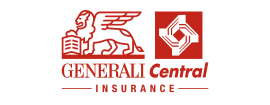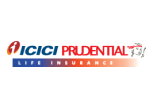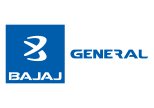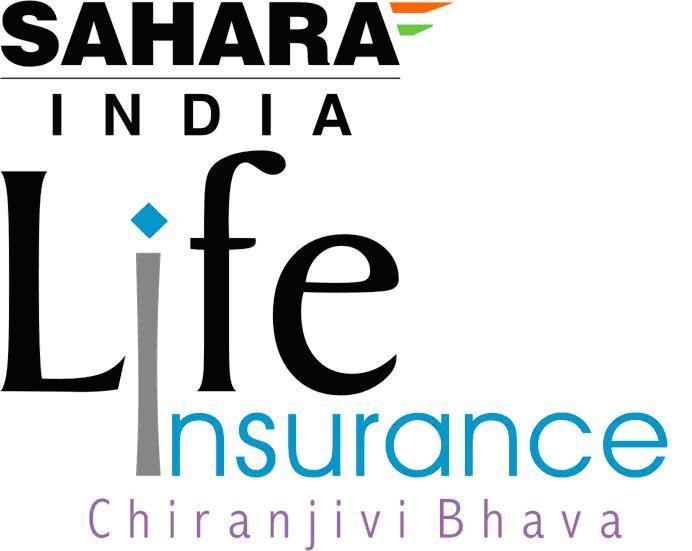
- Tax BenefitUp to 1,50,000**
- Claim SupportEveryday 10AM-7PM
- 45 Lacs+Happy Customers
*Standard Terms and Conditions Apply.
**Tax benefits are subject to changes in Income Tax Act.
GetTax Benefitsu/s 80C & 10(10D)
Best Investment Plans

It is a form of investment which gives you guaranteed returns mentioned while investing along with life coverage.

iSelect Guaranteed Future- iAchieve
You Invest
₹1 Lakh p.a.10 yearsYou GET Tax Free
₹29.1 Lakh20 years

Smart Wealth Plan
You Invest
₹1 Lakh p.a.10 yearsYou GET Tax Free
₹27.3 Lakh20 years

POS Goal Suraksha
You Invest
₹1 Lakh p.a.10 yearsYou GET Tax Free
₹27.1 Lakh20 years
What Is an Investment Plan?
Investment is one of the best ways to multiply your savings. It is basically a financial instrument that helps an individual secure their future in terms of wealth. A significant part of financial planning, investment plans induce the habit of regular investment among investors so that they are able to attain their financial goals and reap the benefits of massive wealth in the future. You should choose the investment amount based on your risk-bearing appetite.
How Does an Investment Plan Work?
The major purpose of investment is to not only multiply your wealth but also indulge yourself in a disciplined way of saving. There are a number of such plans that you can invest in such as ULIP, mutual funds, stocks, gold, and many more. These plans offer returns based on market-factors and how these plans are performing.
Objectives of Investment Plans
Investment plans are a key to a happy and peaceful financial future. Investors looking forward to making their way to the world of investment must consider investment plans as the ultimate solution. Having a good and reliable investment plan by side can help one ensure that they have the much-desired safety net and financial aid in the future, whenever the need arises or in case an emergency situation takes place.
The prime objective of investment plans are that they allow the investor to enjoy:
- Safety: Investment plans are synonymous with financial security. An investment plan is the ultimate way one can make sure that they or their loved ones are never in a state of financial distress. A good investment plan will always grant safety to your financial condition as compared to other riskier options.
- Income: Investment plans add to the investor’s regular income by acting as the additional income or profit. An investor can easily maximize their income by a significant margin by investing in the right investment plan.
- Growth: Investment plans are the ultimate growth one can make the most of in their day-to-day life as well as the time ahead. One of the key tools to ensure financial stability in the future, investment plans are the perfect growth motors that give the desired results with the passage of time and help investors enjoy significant development in the long run.
Types of Investment Plans
Investment plans can be categorized into three major categories. The categorization of investment plans can be done on the basis of the associated risk. It is highly advised that investors must consider the risk factor associated with the investment plan before making a final investment decision. The three types of investment plans based on the aspect of risk are:
- Low-risk Investment Plans: As the name suggests, low-risk investment plans are those investment options that provide stable and reliable capital growth with low risk or losses involved. This investment plan type is advised to investors looking for investment options with guaranteed returns with less or no volatility in the investment portfolio and a stable choice for the long-term. Some of the low-risk investment options include PPF, gold, bank fixed deposit, National Pension Scheme, and many more.
- Medium-risk Investment Plans: Medium-risk investment plans are investment plans that provide a diversified and balanced investment. This investment plan type serves two key purposes, one being offering a growth opportunity to the investor and the second being handling the market volatility up to a specified level. Medium-risk investment plans provide investors a chance to enjoy a stable return with moderate risk by diversifying the investment portfolio with a combination of debt and equity securities. Some of the medium-risk investment plans include monthly income plans, arbitrage funds, and hybrid-debt-oriented funds.
- High-risk Investment Plans: High-risk investment plans are the ones that involve significant fluctuations. However, the chances of these investment plans creating huge returns in the longer run are also quite high. This investment plan type is highly suitable for investors who possess a high-risk appetite and wish to focus on having long-term capital growth.
No matter what your earnings are, you must regularly invest so that you can multiply your income in a disciplined way. Listed below are some of the best investment plans that you should know about:
1. ULIP
ULIP or Unit Linked Insurance Plans are insurance policies that offer a combination of life cover and investment. In unit-linked insurance policies, a part of the policy premium paid by the policyholder is dedicated towards the life cover, while the rest is assigned to a fund or a common pool of money that makes investments in equity, debt, or a combination of both. It must be noted that in ULIPs, the returns on your investments depend upon the performance of the fund opted by you.
- ULIPs come with a lock-in period of 5 years, however, a policyholder can make partial withdrawals only after the lock-in period keeping in mind that the withdrawal values in a year should not be more than 20% of the fund value.
- This plan offers flexibility when it comes to switching funds. So, when a fund is not performing well, you can easily switch from one fund to another.
- For paying the premium towards ULIP, you can choose from a desired premium payment frequency, monthly, yearly, or half-yearly.
- The minimum invested amount can be as low as Rs. 1,500 depending on the investor’s budget.
2. Endowment Plans
Endowment plans are a type of wealth-growing option that lets you build a corpus while availing life cover. One of the key features of endowment policies is that they are specifically designed to provide a lump sum amount in the case of the policyholder’s unfortunate death or on policy maturity.
- Endowment policies do not involve much risk as the amount here is not directly invested in the stock market or equity funds.
- As compared to many other plans, endowment involves lower risk and is thus suggested for those who have a lower-risk appetite.
- It offers flexible premium payment frequency
3. Money Back Plans
Money back plans are life insurance policies that return money at regular periods. The payouts are a specific percentage of the sum assured and made during the policy duration. Note that money back policy pay-outs are referred to as Survival Benefits. Once the policy matures, the remaining Sum Assured is paid in addition to accumulated bonuses.
- If the policyholder dies during the policy tenure, the sum assured is paid even if the Survival Benefits are already paid. This is one of the unique features of the money-back plans.
- On investing in money-back, you can withdraw the money whenever you need it.
4. Pension Plans
Pension plans or retirement plans are policies that help you dedicate a part of your savings to accumulate over a period of time and give steady income after retirement. Retirement plans not only give you regular income post-retirement but also ensure the security of your family in your absence.
- Retirement or pension plans come with tax benefits that contribute to a comfortable retirement.
- There are a number of government-backed pension plans that help individuals easily create a corpus for their future.
5. Child Plans
Child plans are insurance as well as investment plans. Quite popular, child insurance plans help in creating a corpus for the future of the child. On maturity, the child plan provides a lump sum amount to pay for the child’s significant expenses like education, marriage, and more.
- One of the best ways to safeguard the child’s future, is that child plans act as the much-desired financial shield for children and their expenses related to life goals if the family’s main earning member is not there.
- You can use the money generated out of child plans to meet the immediate needs of your child.
- You can also enjoy tax benefits on child plans.
6. Fixed Deposits
As the name suggests, fixed deposits provide a fixed return after a certain period of time. It is one of the safest ways in which you can multiply your savings in the long term.
- The interest rates of fixed deposits vary from one bank to another.
- The returns generated out of fixed deposits are not affected by market fluctuations and are thus a safe option.
- Senior citizens investing in fixed deposits get greater interest rates.
7. Gold
Another investment option that offers a safer haven is gold. Since time immemorial, people have invested in physical gold to get great returns. Over the period of time, people now also invest in digital gold such as gold ETFs, gold bonds, and more.
- It is very important to check gold rates before investing in it as its price keeps on fluctuating.
- You should always buy physical gold from an authorized dealer which has a BIS hallmark certificate.
- You must check the lock-in period if you are investing in digital gold.
8. Mutual Funds
Mutual funds are one of the best ways in which you can invest in a disciplined manner. It is highly affected by market conditions and is thus recommended for those who have a high-risk appetite.
- It is a high-risk investment plan.
- Mutual funds offer great returns in the long run.
- On investing in mutual funds, a fund manager is assigned to look after your funds.
9. PPFs
Public Provident Funds or PPFs is one of the government-backed investment options that lets you build a corpus for your retirement. It is recommended for individuals who have a medium-risk appetite.
- Individuals can open their PPF account in the nearest post office or bank.
- PPFs come with a lock-in period of 5 years and you can withdraw funds from it after the 6th year.
- You can also use your PPF account to get loans.
10. National Pension Scheme
The National Pension Scheme or NPS is another type of government-backed investment scheme. When you invest in this scheme, you get the option to choose from bonds, equities, and other investment options.
- The National Pension Scheme allows partial withdrawal of funds.
- Individuals can enjoy flexibility in payouts when they invest in PPFs.
- It offers two fund options - Auto Choice Funds and Active Choice Funds
11. National Savings Certificate
Another popular scheme that you can invest in is the National Savings Certificate or NSC. Like NPS, the National Savings Certificate can be opened in the nearest post office or bank.
- The returns on the National Savings Certificate are compounded annually.
- There is no limit on the maximum amount that can be invested in a National Savings Certificate.
- The money earned out of the National Savings Certificate is free from tax deductions as specified under the Income Tax Act of 1961.
12. Recurring Deposit
Recurring Deposit or RD is one of the safest investment options in India. Under Recurring Deposit, you need to invest a specified amount of money every month.
- The investment amount in RD can be as low as Rs. 500.
- The RD interest rates vary from one bank to another.
- You cannot change the tenure of recurring deposits once opened. Thus, be careful about the tenure when you are opening this account.
13. Sukanya Samriddhi Yojana
Sukanya Samriddi Yoajan or the SSY scheme is one of the best schemes designed for a girl child. This account can be opened in the nearest post office or bank.
- The SSY account can be opened with an amount that is as low as Rs. 250.
- A family can open only 2 Sukanya Samriddhi accounts for their girl child.
- It is opened by the legal guardian of the girl child.
- The girl child must be below 10 years of age to get the SSY account opened.
Top 5 Best Investment Options In India
There are multiple investment options available in India. Below are the top 5 best investment options in the country on the basis of associated risk and returns:
| Investment Option | Risk Involved | Returns Offered |
| Child Plans | Low to High |
Guaranteed Returns
|
| Endowment Plans | Nil |
High, but safe returns
|
| Money Back Plans | Low | Assured returns |
| Pension Plans | Low to High | market-linked |
| ULIP | High |
As per the investor’s profile
|
You can also make an investment in PPF that includes zero risk and offers returns at 7.10%. Mutual funds are also a significant option in which the risk ranges from low to high. The returns offered in mutual funds are market-linked. Bank FD is another essential investment option that comes with zero risk and offers fixed returns, depending on the bank. If interested, you can also invest in the National Pension Scheme which involves low to high risk and gives market-linked returns at a 9 to 12% rate.
Best Investment Plans in India
| Investment Plan | Plan Type | Entry Age | Maximum Maturity Age | Policy Term | Fund Options |
| Axis MAX LIFE Assured Wealth Plan | Savings | 91days-65 years | 70 years | 20 years | NA |
| Axis MAX LIFE Assured Wealth Plan | Savings | 91days-65 years | 70 years | 20 years | NA |
| Axis MAX Online savings plan | ULIP | 18-54 years | 85 years | 5-85 years | NA |
| Axis MAX Smart Wealth Plans | Savings | 91-65 years | 18-74 years | 16 years | NA |
| Axis Max Life Fast Track Super | ULIP | 18-65 years | 85 years | 5 years | 6 |
| Axis Max Life Fast Track Super | ULIP | 18-65 years | 85 years | 5 years | 6 |
| Bajaj Allianz Fortune Gain | ULIP | 1-63 years | 70 years | 7-30 years | 7 |
| Bajaj Allianz Fortune Gain | ULIP | 1-63 years | 70 years | 7-30 years | 7 |
| Bajaj Allianz Retire Rich | ULIP Pension Plan | 30-73 years | 80 years | 7-30 years | 3 |
| Bajaj Allianz Retire Rich | ULIP Pension Plan | 30-73 years | 80 years | 7-30 years | 3 |
| Bajaj Future Gain | ULIP | 1-60 years | 70 years | 10-25 years | 7 |
| Bajaj Future Gain | ULIP | 1-60 years | 70 years | 10-25 years | 7 |
| Bajaj POS Goal Suraksha | Savings | 18-55 years | 28-65 years | 10-15 years | NA |
| HDFC Click to Invest | ULIP | 0-65 years | 18-75 years | 5-20 years | NA |
| HDFC Life Click 2 Wealth | ULIP | 0-65 years | 99 years | 10-40 years | 11 |
| HDFC Life Click 2 Wealth | ULIP | 0-65 years | 99 years | 10-40 years | 11 |
| HDFC Life Pro Growth Plus | ULIP | 0-60 years | 75 years | 10-30 years | 10 |
| HDFC Life Pro Growth Plus | ULIP | 0-60 years | 75 years | 10-30 years | 10 |
| HDFC Life Sanchay Fixed Maturity Plan | Savings | 90 days-70 years | 18-90 years | 40 years | NA |
| HDFC Life Sanchay Plus | Savings | 5-60 years | 18-71 years | 6-13 years | NA |
| HDFC Sanchay Par | Savings | 30 days-60 years | 100 years | 100 years or 25-40 years | NA |
| ICICI Guaranteed Income for tomorrow | Savings | 18-60 years | 18-71 years | 11 years | NA |
| ICICI Pru Smart Life | ULIP | 20-24 years | 20-64 years | 10-25 years | 8 |
| ICICI Pru Smart Life | ULIP | 20-24 years | 20-64 years | 10-25 years | 8 |
| ICICI Signature | Savings cum ULIP | 0-60 years | 18-99 years | 10-30 years | NA |
| PNB Guaranteed Future Plan | Endowment | 30 days-60 years | 80 years | 12-35 years | NA |
| PNB Metlife Money Back | Money Back | 13-55 years | 65 years | 10 years | NA |
| PNB Metlife Money Back | Money Back | 13-55 years | 65 years | 10 years | NA |
| TATA AIA Wealth Maxima | ULIP | 30 days-60 years | 100 years | 100 minus age at entry | 11 |
| TATA AIA Wealth Maxima | ULIP | 30 days-60 years | 100 years | 100 minus age at entry | 11 |
| TATA Fortune Guarantee Plus | Savings | 5-60 years | 65 years | 10 years | NA |
Disclaimer: The list is organized in alphabetical order based on the names of standalone insurers. InsuranceDekho neither endorses, rates nor recommends any specific insurer or insurance product offered by any insurer. The insurance plans included herein represent products offered by our partner insurers. For a comprehensive list of insurers operating in India, please refer to the official website of the Insurance Regulatory and Development Authority of India (IRDAI) at www.irdai.gov.in.
Benefits of Investment Plans
If you wish to incorporate investment plans in your financial portfolio, rest assured you will get to reap benefits such as:
- Security to Loved Ones: When you choose an investment plan like ULIP, you not only gain life coverage but also a means to enjoy returns on investment. With massive coverage like such by side, it would be easy for you to secure the financial future of your loved ones. Even in the event of your unfortunate death, your family members won’t have to worry about managing their financial situation while compromising on their needs. In fact, they will receive a specific amount in addition to the fund value to keep financial struggles at bay. All in all, your dear ones will remain financially strong even if you, the sole earning member of the family, are no longer there to provide.
- Goal-oriented Planning: Every individual has a specific list of goals that they want to accomplish in their lifetime. It can be anything right from a child's education to creating a retirement fund. An investment plan can help you in saving money to attain your life goals due to the lock-in period associated as a key feature. No matter how big or small your life goal may be, an investment plan can help you fulfill it without making any sacrifices.
- Creation of Wealth: Savings is one of the best ways to create wealth. In addition, investing in the right investment product also adds to the funds. One can easily create wealth by choosing the right investment plan option and making a periodic & disciplined investment. A financial cushion is quite easy to create if one invests in a product that grants them high returns.
- Flexibility in Choice: The market is laden with a wide array of investment options. An investor can easily choose what investment plan suits them according to their financial goals, risk appetite, and tenure of their choice.
- Tax Benefits: Tax benefits are one of the key benefits of investment plans. Like insurance policies, investment options also come with tax benefits under Section 80C and Section 10(10D) of the Income Tax Act, of 1961.
Key Features of a Good Investment Plan
Are you looking for a good investment plan? Below mentioned are a few important features that every good investment plan must comprise:
- Risk Averse: A good investment plan should not expose you to more risk than you can handle or necessary to attain your objectives. Your investment plan should not increase your risk range but go to the minimum level while giving you the returns required to meet your needs.
- Simple: A good investment plan must be simple and not enhance the level of complexity for you. You should be able to do a quick review of your investment plan and assess its performance whenever you want.
- Transparent: A good investment plan must be transparent. In other words, you must know what the investment plan is really about. All the elements must be clear to you so that you know how it works and what you can do to make the most of it.
- Easy to Manage: A good investment plan must be easy to manage. It must allow you to make the necessary changes whenever the need arises without introducing complexity.
- Tax Efficient: A good investment plan must be tax efficient. In simple words, a good investment plan must minimize your taxes while maximizing your investment strategy’s quality and the portfolio produced.
Things to Check Before Choosing Investment Plans
When choosing an investment plan, one must take care of a series of aspects so that one can make an informed decision. Below mentioned are the key features to check before you make your final choice of investment plans:
- Financial Goals: One must always keep their life’s financial goals, whether short-term or long-term in mind when buying an investment plan. Be it education, marriage, or house purchase, one must take all life goals into serious consideration so that one can finance their dreams and aspirations with the help of an investment plan. Whether you have just started earning or planning to invest for the nth time, make sure you decide your investment plan type based on your financial objectives in life.
- Expenses vs Savings: It would be a must for you to consider your expenses, whether current or future in comparison to your savings before buying an investment policy. Why? It is because the amount you will save or invest in an investment plan will play a significant role in helping you meet your financial goals. It is important to note that an investor having less savings and more expenses may not be able to define large short-term goals, which could be attained by coverage plans. On the contrary, an investor investing a massive amount in an investment plan for a significant period of time would have a high chance of benefiting from a larger capital base in attaining their financial goals in the future.
- Insurance Cover: One must always keep the insurance cover, whether existing or required in mind while buying an investment plan. An existing cover must provide the investor with the ultimate coverage of their needs. The cover required should also be able to pay for the expenses in the years to come. If an investor does not know how much coverage they may actually need, it is advised to estimate current & future expenses with what a scheme has to offer. In case the investor’s cover comes across as less than that required, choosing a ULIP or an endowment policy would help in increasing the money as well as ensuring financial protection.
- Number of Dependents: The sum assured to be opted for investment is something that would depend on the number of dependents in the family. One must always keep in mind that a monetary insurance product must not only provide cover for the necessary expenses but also build a financial corpus for the entire family so that they do not find it hard to cover their major life goals.
How to Choose an Investment Plan?
Making an investment plan choice would not be difficult for you if would focus on:
- Analyzing your financial goals and requirements in the first place.
- Come up with a strong strategy by bringing together a combination of the right investment policy and the right insurance cover that fits your needs to a tee.
- Analyze your investment term to achieve each of your financial goals.
- Keep track of different charges applicable associated with different investment plans.
- Create a diverse investment portfolio by investing in a mix of different insurance plans and multiple investment plans.
- Review your investment plans from time to time.
How Does Risk Appetite Affect Your Investment Choices?
Risk appetite and investment are talked about at the same time. It is because risk appetite is the amount of risk an investor is able to handle. Risk appetite is quite important for an investor to be aware of. Why? It is because having an understanding of risk appetite beforehand helps in better planning and management of investments. Moreover, risk appetite helps in learning about the amount of investment a person is able to risk.
What if the returns may not turn out as expected? What if you lose all or some of your investment? One must always know whether such volatility would affect them adversely or cause no stress at all.
If one finds themselves stressed out due to their investment portfolio going down by a few thousand or lakh rupees, they must invest in low-risk investment plans. If you are not stressed out by the loss, you can definitely go for high-risk investments.
Make sure you also keep your life goals and time horizon in mind while analyzing your risk appetite.
Comparison Before Applying for Investment Plans
One must always perform a comparison of investment plans before applying for any. Why? So that it helps in making the ideal investment choice and gives the desired returns. Mentioned below are some of the elements that you must consider for comparing all investment plans and prior to applying for any:
- Coverage: It is advised to compare coverage of multiple insurance investment plans provided by different insurance companies. Performing a comparison of cover will help you determine the suitable premium within your budget.
- Premium: Choose an investment plan the premium of which is the most suitable as per your financial conditions.
- Riders: Riders or add-on covers help in enhancing the total coverage. If you want your investment plan to offer more than what would expect, go for an investment policy that comes with the option to add riders. Adding a rider will provide you with increased coverage over and above your base policy. Make sure you perform a thorough comparison of riders and choose one that fits your needs perfectly.
- Increase or Decrease Premium: Compare investment plans for the feature of increase or decrease in the premium. Selecting an investment option with this feature will help you start with a lower cover and increase it with your increasing income over a period of time.
- Returns: Investment plans must always be compared for their returns. Note that returns depend on the types of funds that comprise the investment plan. Whether high-risk takers or low-risk takers, every investor must compare returns so as to pick the best investment policy.
- Type of Payout: While there are investment plans with regular payout types, there are some that offer a one-time payment. Also present are the types that provide a mix of both. You must always compare an investment plan based on the payout type and go with the one that suits your purpose in the best possible way.
- Alternatives: It may be possible that a single investment plan may not be enough to meet your or your family’s needs. Compare all the investment plans and choose a second plan that can act as a backup if the primary plan fails to cater to your requirements.
Best Investment Plan for 1 Year
For people with a short-term investment horizon or looking forward to investing in an investment plan for 1 year, it is advisable to avoid equity investments due to market volatility. Some of the investment plans that you can choose from are mentioned below:
| Investment Plan for 1 Year | Concept | Suitable for |
| Arbitrage Funds | A mutual fund type |
People looking for 1 year or more for investment
|
| Debt Funds | Mutual fund schemes investing in fixed income instruments |
People looking for everyday profit
|
| Fixed Deposits | Safe, financial instruments provided by banks or NBFCs |
People looking for 1 year of investment
|
| Fixed Maturity Plan | A class of debt funds investing in fixed income instruments |
People willing to invest in diverse constant earning instruments
|
| Post Office Deposits | Investment instrument provided by Indian Postal Services |
People looking for 1, 2, 3, and more years of investment
|
| Recurring Deposits | A term deposit that requires depositing a fixed amount every month |
People who invest on a monthly basis
|
Best Investment Plan for 3 Years
Investment plans for 3 years fall under the category of short-term investments. If you are planning to get higher returns within a short period of time, below mentioned investment plans would be a better option to go with:
| Investment Plan for 3 Years | Concept | Suitable for |
| Arbitrage Funds | A type of mutual fund |
Ideal for those looking for 1 year or investment for more years
|
| Fixed Maturity Plan | A debt fund class that invests in fixed income instruments |
Ideal for those looking for an option similar to an FD
|
| Liquid Funds | Debt funds that invest in fixed-income securities |
Ideal for those looking for a secured investment
|
| Recurring Deposits | A term deposit that requires depositing a fixed amount every month |
Ideal for those who invest on a monthly basis
|
| Savings Account | A basic bank account that allows you to deposit money and withdraw funds while earning interest |
Ideal for people looking for liquidity
|
Best Investment Plan for 5 Years
Investment plans for 5 years belong to the category of short-term, low-risk investments. By investing in the best investment plan for 5 years, you can definitely earn higher returns as compared to those in 1 year or 3 years. If looking forward to making an investment in a plan for 5 years, you can choose any of the below-mentioned investment options:
| Investment Plan for 5 Years | Concept | Suitable for |
| Large Cap Mutual Fund | Funds investing in a larger proportion of corpus in large cap funds |
Ideal for investors looking for investment for 3 to 5 years
|
| Liquid Funds | Debt funds investing in fixed-income securities |
Ideal for people interested in making a secured investment
|
| Post-office Term Deposit | Similar to bank FD where money is saved for a time limit and returns are guaranteed |
Individuals seeking high liquidity and investment between 1 to 5 years
|
| Savings Account | Basic bank account where one can deposit & withdraw funds while earning interest |
Individuals seeking liquidity
|
Riders of Investment Plans
Investment plans come with death risk coverage, however, riders can avail as per their choice to increase the policy coverage. In addition to the basic sum assured, rider benefits are also paid to the policyholder. Below mentioned are some of the key riders available under term insurance policies:
- Accidental Death Riders: Under the rider, the nominee gets the sum assured along with the rider benefit in case the policyholder dies due to an accident.
- Accidental & Total Permanent Disability Rider: Under the rider, the insurance company gives the rider benefit to the life insured in case the latter suffers total permanent disability due to an accident.
- Accelerated Death Benefit Rider: In case the life insured is diagnosed with a terminal illness, the insurance company gives a part of the sum assured in advance for medical expenses and the rest to the nominee.
- Waiver of Premium: The rider waives off future premiums if the life insured suffers any disability due to which they are not able to pay the premium. The policy terminates thereafter.
- Critical Illness Rider: The insurance company pays the critical illness rider benefit if the life insured is diagnosed with any of the covered critical illnesses like paralysis, coma, heart attack, cancer, etc.
Eligibility Criteria to Buy Investment Plan
An investor must fulfill the below-mentioned eligibility criteria if they wish to buy an investment plan:
- Meet the entry age criteria as described in the policy documents of the investment plan.
- The investor must adhere to the premium payment terms and mode under the investment plan.
- Extension beyond the maximum age is not allowed under the investment plan.
Documents Required for Buying Investment Plan
In India, the documents required for buying an investment plan include:
- ID Proof - Aadhaar Card, PAN Card, Voting Card, etc.
- Age Proof - Aadhaar Card, Passport, Driving License, Voting Card, etc.
- Address Proof - Aadhaar card, Voting Card, Passport, Driving License, etc.
- Income Proof - Salary Slips, Bank Statement, Income Tax Returns, etc.
How to Buy an Investment Policy Online in India?
An investor looking forward to buying an investment plan in India must compare all their options and choose the one that suits their needs the most. Thereafter, they must follow the below-mentioned steps so as to buy the investment plan online:
Step 1: Visit the insurance company’s website.
Step 2: Provide correct and complete information that is requested.
Step 3: Choose the desired options.
Step 4: Select the ideal plan with a premium quote that suits your needs.
Step 5: Fill out the proposal form with correct and complete information.
Step 6: Upload the requested KYC documents such as ID/Address Proof, Medical Report, Income Statement, Bank Mandate Form, etc.
Step 7: Once verification and premium payment are done, the policy will be delivered to you online within a span of 24 hours.
Types of Investment Plans
Investment plans can be categorized into three major categories. The categorization of investment plans can be done on the basis of the associated risk. It is highly advised that the investors must consider the risk factor associated with the investment plan before making a final investment decision. The three types of investment plans based on the aspect of risk are:
- Low-risk Investment Plans: As the name suggests, low-risk investment plans are those investment options that provide a stable and reliable capital growth with low risk or losses involved. This investment plan type is advised to investors looking for investment options with guaranteed returns with less or no volatility in the investment portfolio and a stable option for long-term. Some of the low-risk investment options include PPF, gold, bank fixed deposit, National Pension Scheme and many more.
- Medium-risk Investment Plans: Medium-risk investment plans are the investment plans that provide a diversified and balanced investment. This investment plan type serves two key purposes, one being offering a growth opportunity to the investor and the second being handling the market volatility up to a specified level. Medium-risk investment plans provide the investors a chance to enjoy a stable return with moderate risk by diversifying the investment portfolio with a combination of debt and equity securities. Some of the medium-risk investment plans include monthly income plans, arbitrage funds, and hybrid-debt oriented funds.
- High-risk Investment Plans: High-risk investment plans are the ones that involve significant fluctuations. However, the chances of these investment plans creating huge returns possible in the longer run are also quite high. This investment plan type is highly suitable for investors who possess a high-risk appetite and wish to focus on having long-term capital growth.
When categorized on the basis of insurance, the investment plans in India can be classified into five key types. One must always keep their needs in mind before investing in an investment plan. The five major insurance-based investment plans are as follows:
- ULIP - ULIP or Unit Linked Insurance Plans are insurance policies that offer the combination of life cover and investment. In unit-linked insurance policies, a part of the policy premium paid by the policyholder is dedicated towards the life cover, while the rest is assigned to a fund or a common pool of money that makes investments in equity, debt, or a combination of both. It must be noted that in ULIPs, the returns on your investments depend upon the performance of the fund opted by you. ULIPs come with a lock-in period of 5 years, however, a policyholder can make partial withdrawals only after the lock-in period keeping in mind that the withdrawal values in a year should not be more than 20% of the fund value.
- Endowment Plans - Endowment plans are a life insurance policy type. Under endowment plans, a policyholder gets the chance to build a savings corpus, while availing life cover. One of the key features of endowment policies is that they are specifically designed to provide a lump sum amount in the case of the policyholder’s unfortunate death or on policy maturity. Endowment policies do not involve much risk as the amount here is not directly invested in stock market or equity funds.
- Money Back Plans - Money back plans are life insurance policies that return money at regular periods. The payouts are a specific percentage of the sum assured and made during the policy duration. Note that money back policy pay-outs are referred to as Survival Benefits. Once the policy matures, the remaining Sum Assured is paid in addition to accumulated bonuses. If the policyholder dies during the policy tenure, the sum assured is paid even if the Survival Benefits are already paid. This is one of the unique features of the money back plans.
- Pension Plans - Pension plans or retirement plans are policies that help you dedicate a part of your savings to accumulate over a period of time and give steady income after retirement. Retirement plans not only give you regular income post retirement, but also ensure security of your family in your absence. What’s best is that retirement or pension plans come with tax benefits that contribute to a comfortable retirement.
- Child Plans - Child plans are insurance as well as investment plans. Quite popular, child insurance plans help in creating a corpus for the future of the child. On maturity, the child plan provides a lump sum amount to be used for paying for the child’s significant expenses like education, marriage and more. One of the best ways to safeguard the child’s future, child plans act as the much-desired financial shield for children and their expenses related to life goals if the family’s main earning member is not there.
Buy Investment Plans From
 Kotak Life Investment
Kotak Life Investment Future Generali Investment
Future Generali Investment SBI Life Investment
SBI Life Investment PNB MetLife Investment
PNB MetLife Investment HDFC Life Investment
HDFC Life Investment ICICI Prudential Investment
ICICI Prudential Investment LIC Investment
LIC Investment Axis Max Life Investment
Axis Max Life Investment Tata AIA Investment
Tata AIA Investment Bajaj General Investment
Bajaj General Investment Bandhan Life Insurance
Bandhan Life Insurance Aditya Birla Sun Life Investment
Aditya Birla Sun Life Investment Bharti AXA Investment
Bharti AXA Investment Edelweiss Tokio Investment
Edelweiss Tokio Investment Pramerica Life Investment
Pramerica Life Investment Canara HSBC Investment
Canara HSBC Investment Reliance Nippon Investment
Reliance Nippon Investment Shriram Life Investment
Shriram Life Investment India First Life Investment
India First Life Investment Sahara Life Investment
Sahara Life Investment Aviva Life Investment
Aviva Life Investment Ageas Federal Life Investment
Ageas Federal Life Investment Star Union Dai-Ichi Investment
Star Union Dai-Ichi Investment
Disclaimer: InsuranceDekho does not endorse, rate or recommend any particular insurance company or insurance plan.
FAQ About Best Investment Plans in India 2025
-
-
What are the different investment options apart from insurance?
Apart from insurance, you can invest in stocks, savings and mutual funds.
-
Which investment gives the highest returns?
Some of the investment instruments that give the highest returns are fixed deposits, bonds, PPF or public provident fund, National Savings Certificate, National Pension Scheme, mutual funds and ULIPs.
-
Where should I invest short-term savings?
If you want to invest in short-term savings, it is advisable to choose bank fixed deposits, savings account, short-term debt mutual funds, large cap mutual fund schemes, money market accounts, or gold and silver.
-
What are some of the safest investment options?
If you are risk-averse and want to invest in an option that is safe, it is highly recommended that you choose fixed deposits, public provident fund PPF, bonds, National Pension Scheme, National Savings Certificate, mutual funds and more.















